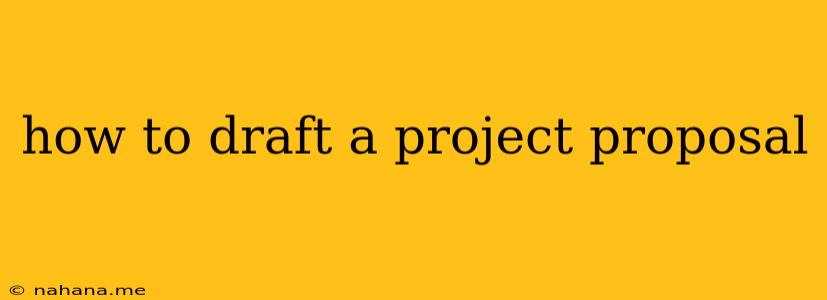A project proposal is a crucial document that outlines your project's objectives, methodology, budget, and timeline. It serves as a roadmap for your project, guiding you and your team through its implementation. It also provides potential funders or stakeholders with a clear understanding of what your project is about and why they should support it.
Essential Elements of a Project Proposal
A compelling project proposal should include the following elements:
1. Executive Summary
This is a brief overview of your project, highlighting its key points. It should capture the reader's attention and provide a concise summary of the project's goals, methodology, and expected outcomes.
2. Project Description
This section delves deeper into the details of your project, providing a comprehensive description of its background, purpose, and relevance.
- Problem Statement: Articulate the problem or issue your project aims to address.
- Project Goals and Objectives: Clearly define the specific goals and objectives you intend to achieve through the project.
- Project Scope: Outline the boundaries of your project, defining what it will and will not include.
3. Methodology
Describe the methods you will employ to achieve your project's goals. Explain how you will carry out your project, including:
- Activities: List the specific tasks and activities you will undertake.
- Timeline: Provide a realistic timeline for completing the project, outlining key milestones.
- Resources: Identify the resources you will need, such as personnel, equipment, and materials.
4. Budget
Present a detailed budget that outlines the financial resources required for your project.
- Itemized Costs: Break down the budget into specific categories, such as personnel, equipment, materials, travel, and other expenses.
- Funding Sources: Identify the sources of funding for your project.
5. Evaluation Plan
Explain how you will measure the success of your project and assess whether you have achieved your objectives.
- Evaluation Metrics: Determine the key metrics you will use to evaluate your project's impact.
- Data Collection Methods: Outline how you will collect and analyze data to assess your project's outcomes.
6. Team and Expertise
Highlight the expertise and experience of your team, demonstrating their ability to carry out the project successfully.
- Team Members: Introduce the key individuals involved in the project, including their roles and responsibilities.
- Relevant Expertise: Emphasize the team's qualifications and experience related to the project's goals and objectives.
7. Appendices
This section contains supporting documentation, such as:
- Letters of Support: Letters of support from relevant organizations or individuals.
- Resumes/CVs: Resumes or CVs of key team members.
- Other Supporting Documents: Any additional documents that provide further details or context.
Tips for Drafting a Winning Proposal
- Know Your Audience: Understand the interests and priorities of your target audience.
- Keep it Concise and Clear: Use plain language and avoid technical jargon.
- Focus on Impact: Emphasize the potential benefits and outcomes of your project.
- Proofread Carefully: Ensure that your proposal is free of grammatical errors and typos.
- Seek Feedback: Get feedback from colleagues or mentors before submitting your proposal.
A well-crafted project proposal is crucial for gaining support and funding for your project. By following these tips and structuring your proposal effectively, you can increase your chances of success.
